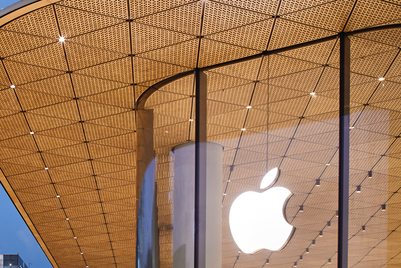
If you’ve been fortunate enough to go on a safari, you’ve no doubt returned richer for the experience. There’s something unforgettable about observing wildlife in their natural habitat; you feel as if you’ve gained an authentic appreciation of their world and how they live.
It therefore stands to reason that in order to gain a better appreciation of how consumers live, and the group norms that drive their ‘herd instinct’, marketers should embark on one of the most overlooked and underestimated of exercises: the consumer safari.
Simply put, a consumer safari is a journey of discovery. It’s more qualitative than quantitative research, yet not exactly that because the process is more serendipitous than structured—and the outcomes are all the more potent for it.
A consumer safari is equal parts immersion and observation. Immersion is critical, because how consumers interact with media today, how they select, purchase, use and recommend products and services, is very different from consumer behaviour of even a decade ago. Just think about how you used to learn about new products and eventually buy them, and how today’s teenagers do. To get under their skin, to really understand what makes them tick, you need to immerse yourself in their world, to observe them ‘in the wild’. Because if you want to see how lions hunt, you can’t just go to the zoo.
Observation is equally important. Too often marketers equate a consumer safari to a stroll in the park. It’s easy enough to observe and play back consumer behaviour—that’s what you see. It’s far more challenging to uncover and take note of consumers’ thoughts and feelings—because that’s what you don’t see.
For instance, when Skype commissioned some research to understand why consumers weren’t signing up in droves to use it for long-distance calls, the most common responses revolved around the hassle of booting up the computer in order to log onto Skype to make the call. But something didn’t gel. Younger consumers spend more time in front of their laptops and mobile devices than anything else. It was only when a sensitive researcher unearthed and played back this admission—“I don’t know how, and I don’t want to look stupid by asking”—that a blazing insight was captured. The company addressed this by producing some simple ‘how-to’ video clips, and adoption rates soared.
But if consumer safaris are all they’re cracked up to be, why aren’t marketers falling over themselves to go on one? The reasons, though misguided, are, on one level, somewhat understandable:
- They’ve already got reams of data on their consumers, sliced and diced to give them every conceivable take on human behaviour. So there!
- They’ve got a market research agency to do that kind of groundwork. It’s far more important to focus on the strategic, upstream stuff.
- They invoke the spirit of Akio Morita or Steve Jobs, both of whom famously said, “The consumer doesn’t know what they want.”
- They’ve done it before, so there’s nothing new to be learned. Besides, it’s hot out there!
Once we get around these arguments, we can then focus on getting the most out of your consumer safari.
Most consumer safaris are structured around this basic format: Clarify your objectives, create a discussion guide, meet/observe the consumer, then share and reflect on your observations to capture insights on your target audience, which will in turn be used to create effective marketing programmes that resonate with these consumers. Here are a few tips on getting it right:
- Ask the right questions: And keep on asking why. True insights are often only uncovered when you peel the onion deep enough to get past conventional stock responses and into the realm of the subconscious mind.
- Keep an open mind: Don’t focus too strongly on what you want to know or would like to hear. The tighter your upfront preparations, the easier it’ll be for you to let serendipity take its course. Often the most unguarded, unfiltered comments come when you let the consumer lead the conversation.
- Don’t come to quick conclusions: Consumers may not know what they want, but neither do you. So leave your preconceptions at the door.
- Tell stories to uncover the brand story: Safari convention includes the telling of stories in the evenings over dinner and drinks. Similarly, consumer safaris end with a time of reflection and retelling of the day’s observations. It is during these times, when statements are left to percolate and the group applies their imagination, that potent insights are often brewed.
Some of the world’s foremost marketing organisations and their leaders have long practiced this discipline. Procter & Gamble, under the leadership of AG Lafley and Jim Stengel, swore by the mantra, the consumer is king. CEO Lafley made it a point to visit a consumer at home—in the natural habitat—every time he visited a local market. And CMO Stengel retooled the entire marketing function during his seven years at the helm, putting the consumer at the centre of everything P&G did. The result: P&G doubled sales during his tenure.
Over at Unilever, Simon Clift, during his time as CMO, echoed this emphasis on listening to the consumer. As he put it, “We may be ahead of our competitors, but we’re most definitely behind our consumers.”
In an earlier installment of this series, I mentioned a blazing insight Clift uncovered on a business trip to a local market, and it's worth repeating here.
I had met housewives in Brazil, holding their families together on £120 a week, who would spend a third of their household budget on hair products by Unilever. In a focus group, I asked one woman why she spent so much on them, and she simply replied: ‘Because my hair is the most beautiful thing I own.’ It was very humbling as a marketer, to realise we have the ability to improve people’s lives. That’s a fantastic privilege—most people do dull jobs.
Recently, EffectiveBrands completed a Marketing Excellence programme for Japanese haircare and cosmetics giant Shiseido. One of the key training modules revolved around consumer understanding and developing insights. To help Shiseido marketers immerse themselves in the world around them, we put them in wheelchairs for half a day (to help them experience first-hand the life of a disabled person in Japan), then brought them on safari to the Shibuya and Harajuku districts of Tokyo (to observe and meet with the target consumers of their branded products). The result was an eye-opening experience that caused participants to re-examine their long-held assumptions about how consumers live and make their brand and purchase decisions today.
Make no mistake: Consumer safaris aren’t new. But they are most decidedly not obsolete. In fact, they may be more needed in today’s fast-changing world than ever before. If you ever feel lethargic about embarking on yet another safari to see how the rest of the world lives, remember this: Leopards don’t change their spots every other week. But consumers do.
 Please see the other articles in this continuing series.
Please see the other articles in this continuing series.
Hugo Saavedra is a senior consultant with EffectiveBrands, a global marketing consulting firm dedicated to unleashing global brand potential. Based in Singapore, Saavedra has experience with clients including Mead Johnson Nutrition, Johnson & Johnson, and Campbell’s.



.jpg&h=334&w=500&q=100&v=20250320&c=1)


.jpg&h=334&w=500&q=100&v=20250320&c=1)
.jpg&h=334&w=500&q=100&v=20250320&c=1)

.png&h=334&w=500&q=100&v=20250320&c=1)









.jpg&h=268&w=401&q=100&v=20250320&c=1)